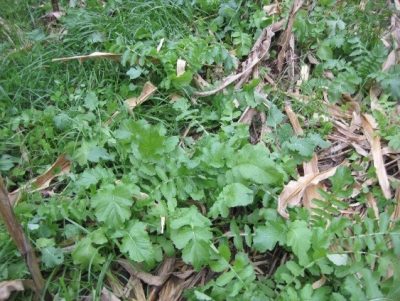Cover Crops
What are they?
With soil health concerns on the rise many farmers are incorporating new soil health practices on their farm fields. The most popular soil health practice that farmers are adopting is cover crops. Vegetation that is inter-seeded into a cash crop or planted directly after harvest and remains in the field through the fallow period is considered a cover crop. Some of the major benefits of cover crops include improving soil structure, increasing organic matter, preventing soil erosion, reducing excess nutrients, and keeping nitrogen in the field. These benefits are achieved through planting different combinations of vegetation called non-legumes, brassicas, and legumes.
Non-legume vegetation consists mainly of grass species. Some of these species include Annual Ryegrass, Winter Cereal Rye, Winter Triticale, and Spring and Winter Wheat. When non-legumes are used as cover crops they are very universal. Most of the non-legume species are good for grazing, erosion prevention, suppressing weeds, scavenging nitrogen and building soil. The legumes are composed of clovers, peas, beans, and vetch. These species are excellent at scavenging nitrogen and being a nitrogen source. Brassicas such as Radish, Canola, and Turnips are well known for their ability to break up compaction. While also reducing compaction they grow quickly, scavenge nitrogen, and leave very little residue. Since each field is different, farmers can plant different mixes that will work best for their operation.
What do they do?
Here’s the benefits:
* Decreases the use of herbicides and fertilizers
* Decreases the use and maintenance of tillage equipment
* Decreases fuel costs and amount of labor
* Increases organic matter in your soil
* Suppresses weeds and other pests
* Increases water infiltration
* Increases biodiversity
* Reduces soil erosion and compaction
* Promotes nitrogen fixation
* Captures and recycles nutrients
Saves you time and money while your soil gets healthier!
If you are interested in cover crops and would like to know more details contact us today at the Blue Earth SWCD. We can help you create a plan for cover crops that will target the goals you have for the soil in your field. We can also help by providing funding sources that will assist with the financial costs during your trials with attempting to restore your soil health with cover crops.
To learn more about our Cover Crop program, contact us at Blue Earth SWCD!
Phone: 507-345-4744
Informational Web Links on Cover Crops:
SARE – Building Soil Fertility
Using Cover Crops to Improve Soil and Water Quality
How Cover Crops Suppress Weeds


